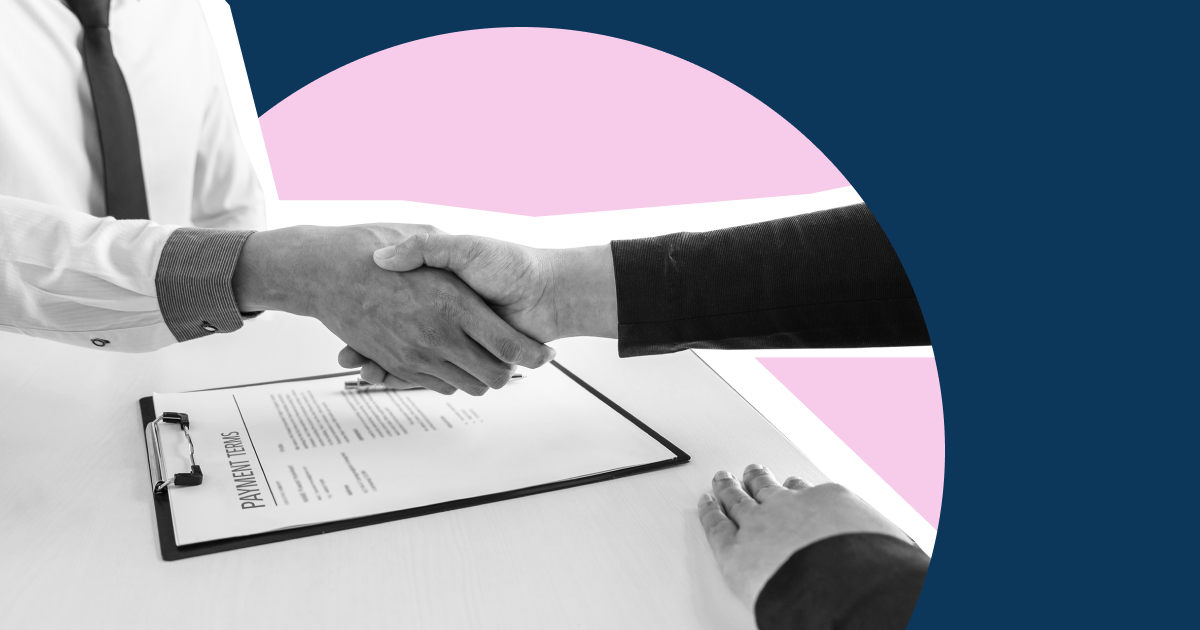Summary
When starting your e-commerce business, one of the biggest decisions you need to make is choosing the right platform to sell your products. Whether it’s Lazada, Shopee, Amazon or Qoo10一that’s where you will get access to the millions of shoppers who browse these sites and hopefully score successful buyers to cart out.
These days, there’s no shortage of where you can start selling一but this means you have to play your cards right on where to start, especially if it’s your first foray in the e-commerce world.
In this article, we’ll be looking at a few key factors to consider when considering the right e-commerce platform for your business, namely:
- Cost to register a seller’s account
- Shipping fees
- Resources for sellers
- Logistic vendors
- Withdrawing process
- Commission and selling fees
On top of that, we will also cover:
- Recommendations for small business owners
- Whether you should sell your products on one or multiple platforms
Pro tip: Scroll to the bottom of the article for a sure-fire way to increase your bottom line.
1. Cost to register a seller’s account
If you’re just starting out, the costs to get your business up and running on any of these e-commerce platforms should be foremost on your mind. Luckily, most of them allow you to register for a seller’s account at no cost一with the exception of Amazon and Qoo10.
Shopee: Free
Lazada: Free
Amazon: A monthly fee of $29.95 (fee waiver till 31 December 2022)* or $1 per item sold (fee waiver till 31 December 2022)*
Qoo10: $100
*excluding additional selling fees
Pro tip: Before registering for a seller account, be sure to register your business entity first. Check out this article for the different types of business entities available in Singapore.
2. Shipping fees
E-commerce businesses and shipping go hand in hand. It is essential to providing a good customer experience and as such, shipping fees are just part and parcel of the daily running of your business. This is an overview of the costs to keep in mind when you’re budget planning.
Shopee: Seller shipping fees
Lazada: Shipping fee rate card
Amazon: Seller shipping fees
Qoo10: Flat rate of $2.49
3. Resources for sellers
As seller’s resources go, comprehensive databases that provide everything you need to know as a seller can be a lifesaver, particularly when you’re starting out. Statistically, hiccups are bound to happen. Luckily, this is where the platforms on this list shine most. From video courses to webinars and of course, helpful articles, you won’t be hard pressed to find assistance from their respective help resources for sellers.
Shopee: Seller Education Hub
Lazada: Lazada Seller Center
Amazon: Amazon Seller University
Qoo10: Qoo10 Help Center
4. Logistic vendors
While shipping fees are important to take into consideration, the other part of the equation are the logistic vendors tied to each vendor. Depending on your product, such as the weight and size, it could clue you in as to which vendor would work best for you.
Keep in mind that some vendors might not be equipped to handle fragile or perishable items so it’s best to read the fineprint as you wouldn’t want to compromise the quality of your product.
Shopee: Ninja Van, Singapore Post, uParcel and J&T Express
Lazada: Ninja Van, CJ Logistics, Singapore Post and J&T Express
Amazon: Amazon Prime
Qoo10: Qprime and Qxpress
Pro tip: Start earning unlimited 1% cashback on Ninja Van with Aspire’s E-Commerce Card.
5. Withdrawing process
Once the orders come pouring in, you’ll want to transfer the money to your bank account一stat. This is called the withdrawing process. Depending on the platform of choice, the length of time it takes could vary so it’s important to take note of this early on the selection stage. The amount of times you can withdraw in a week also depends on which platform you’re selling on.
Shopee
Shopee sellers can opt for automatic or manual withdrawals. The main difference between the two is that manual withdrawals are more suited if you prefer to make more withdrawals within a week while automatic withdrawals are set at fixed intervals of once every week or month.
Lazada
For Lazada, the type of withdrawing process depends on whether you’re an individual or corporate seller. Individual sellers can choose between auto or manual withdrawals. If you fall under the latter category, you can’t choose as the auto withdrawal option is the default.
Amazon
If you wish to see the money transferred to your bank account, you might want to wait a bit longer if you are selling on Amazon. It could take up to 5 business days for it to appear. Amazon uses Automated Clearing House (ACH) or electronic funds transfer to facilitate this process.
Qoo10
Qoo10 sellers would be pleased to know that withdrawing your income earned on the platform to your personal bank account is quite a flexible process as you’re able to request at any time. However, a fee of S$0.30 will be charged with every withdrawal. Depending on the cut off time, you might receive it as early as the next day or the day after tomorrow.
6. Commission and selling fees
Choosing your e-commerce platform of choice also dictates the amount of commission fees you’ll have to fork out for each product sold. Commission fees are typically calculated at a varying percentage of the product’s listing price. Be sure to pay particular attention to the commission caps that differ from platform to platform. The prevailing commission structure will have implications for how much you’ll price your items to ensure that your profit margins are protected.
Shopee
If you’re selling under Shopee’s marketplace, it is free for sellers with less than 100 completed orders.
Shopee charges a commission fee that ranges from 3% to 5%, exclusively for Shopee Mall sellers only. These are established regional or global brands the likes of Microsoft, Loreal and Adidas. Product types such as mobile phones, large home appliances and laptops fetch the lower 3% commission charge as they are high-value products.
To see the full breakdown of Shopee’s commission model, refer to the table below:

Lazada
If you’re a local seller that’s planning to sell under Lazada’s marketplace, bear in mind that there is no commission or selling fee.
According to the product type, Lazada charges LazMall sellers (typically global brands) a commission rate of 1% to 4%. The rate could be higher depending on the country you’re based in. For example, for products in Vietnam, the maximum commission fee for certain products can go as high as 8%.
Amazon
Dubbed as referral fees, Amazon charges their sellers a percentage of the total price anywhere from 6% to 12%. Total price here refers to the product price, shipping cost as well as gift-wrapping charges (if any). Notably, this is significantly higher than their regional counterparts listed in this article.
It’s worth noting that Amazon Singapore sellers will be guided by an assigned Account Manager to iron out any issues you might face. For beginners in e-commerce, this could be a huge plus for the marketplace.
Qoo10
To start selling on Qoo10, you would need to pay a $100 deposit upon registration. Thereafter, selling fee ranges from 6% to 12%.
Recommendations for small business owners
While there is no “best” platform per se, what’s worth considering before you start is the potential customer base you can tap on based on the platform’s overall reach and top selling product categories. With this information in mind, you can then be able to make the best decision on the most suitable sales channel for your small business in Singapore, further strengthening your ability to drive sales.
Monthly visits per platform
- Shopee: 343 million
- Lazada: 128 million
- Amazon.sg: 3.8 million
- Qoo10: 3.7 million
Top product categories per platform
A peek into the best-selling products across the 4 e-commerce platforms we’ve compared in this article shows what consumers are looking for when they visit the respective marketplaces. This could clue you in on where to sell based on the products you wish to sell knowing that strong consumer demand is already there.
Shopee
Shopee is a force to be reckoned with in the region, especially when its sales events come around. During its last 12.12 sale, the platform saw a 13-time increase in sales as compared to a normal day, with over 14 millions vouchers claimed in just the first 2 hours.
Its top product categories are home and living, women’s apparel and health and personal care.
Lazada
A strong regional contender in its own right, Lazada also offers explosive promotions and flash deals to entice shoppers. The categories that saw the biggest sales across Southeast Asia are electronics, fashion and beauty as well as baby products一especially for Malaysian and Philippine shoppers.
Amazon
Driving global online sales on Amazon is worth pursuing, especially if you’re opting for their trademark Fulfillment by Amazon (FBA). For those looking to enter the e-commerce space via Amazon Singapore, its marketplace boasts high sales revenue in fashion, electronics and media as well as toys, hobby and DIY categories.
Conclusion: should you list on one platform or multiple platforms?
Sellers, there are many reasons why you should expand your reach by listing your products across multiple platforms. More platforms means increasing your product’s visibility, not to mention the potential of multiplying your customer base.
Why you should list on multiple platforms:
- Increase customer reach
- Gather insights across platforms to understand your customers better
- Provide a more convenient shopping experience for your customers so they can access your products on the platform of their choice
- Boost sales during peak shopping events (eg. 11.11, 12.12, Cyber Monday, etc.)
- Rely on another platform as a back up plan should anything go wrong
However, there are also variables to consider before jumping the gun. To help you decide, we list the benefits below.
Consider these questions before listing on multiple platforms:
- How much have you set aside to sell your products online?
- How much time are you willing to spend on learning how to get the most out of the platform?
- What kind of product are you selling?
- Do you have a team supporting you?
- Which market or territory are you trying to reach?
- Does the platform serve your market best?
Improve your bottom line with the Aspire E-commerce Card
Start your business on the right foot with the E-Commerce Card. It empowers sellers to boost their bottom lines by earning cashback on e-commerce essentials, pay the market lowest foreign transaction fees and manage spending by issuing a card for each expense type.










%201.webp)


.webp)